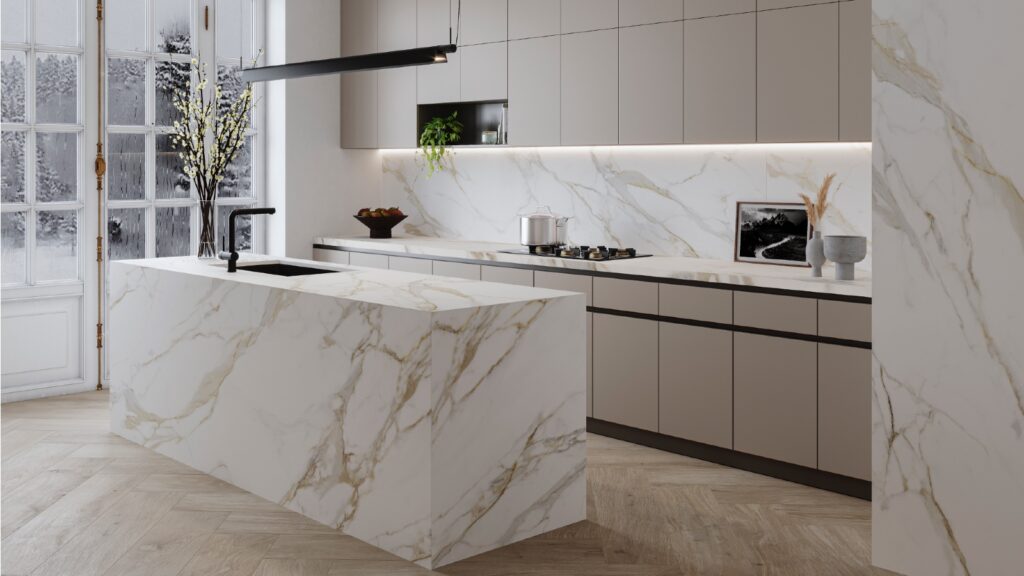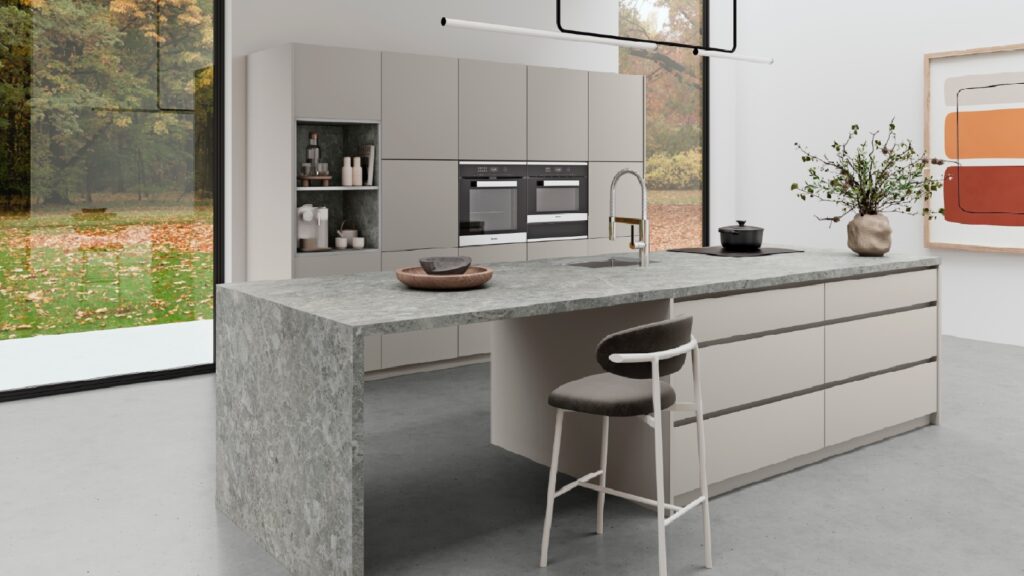How the cottagecore interior trend has impacted on kitchen furniture from door style and material choice through to heritage colours
It may be the Downton/Bridgerton effect or simply a wistful longing to return to simpler times which has seen greater interest in more classical kitchen interiors. Although by its very nature, the timeless or classical kitchen has never gone away, there has been a recent resurgence in more maximalist styles.
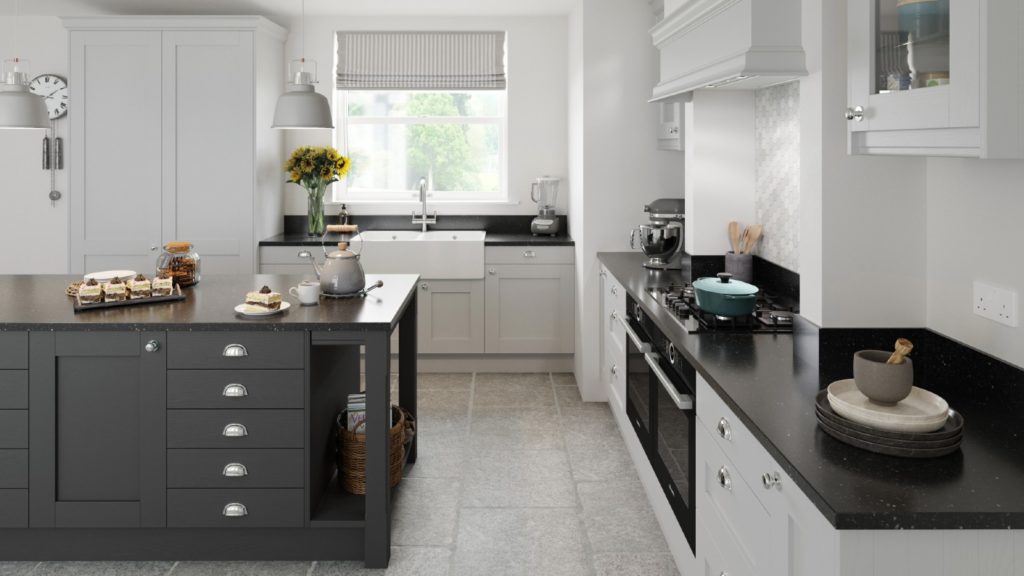
The Midsomer Shaker oak collection from Crown Imperial is presented in Graphite and Light Grey. A traditional larder takes centre stage in this timeless kitchen design.
UK country manager of Nolte Kuchen Chris Rushby explains: “Nostalgia and more classical designs have certainly become increasingly popular…Classic designs are one more way to express personal taste and create a different look and feel.”
Sponsored Video
Although group marketing and retail sales director at Symphony Simon Collyns believes the classical kitchen trends started a few years’ ago, he points out: “The current cottagecore trend has also catapulted it into a look that’s everywhere right now in terms of online interiors platforms and home interest magazines.”
Doors and storage
The trend for nostalgia has impacted both on the choice of door and storage. Enter the likes of butler pantries and larders.
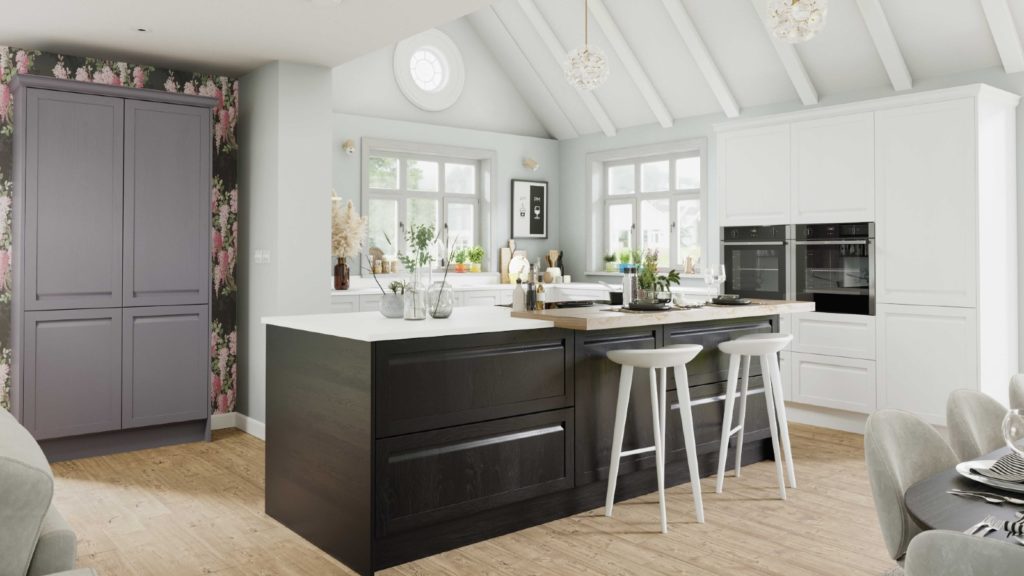
Faversham, from LochAnna Kitchens, is a contemporary update of a classical Shaker door and features an integrated handle. It is shown in Bright White, Soft Black and Lavender.
Commercial director of Crown Imperial Tony McCarthy comments: “In recent years, traditional larder and pantry storage has also seen a resurgence, as consumers look to create a feeling of nostalgia in their kitchen combined with organised elegance.
Many are looking for longevity of style, whether Shaker, in-frame or a painted style – all offer a universal appeal to achieve a vintage charm.”
And the popularity of these styles are also reflected in the sales of LochAnna Kitchens, as Sinead Trainor reports: “Our Shaker designs and painted timber doors are selling especially well. Specifically, our Durham in-frame, which is our most classical design, has sold incredibly well and is the embodiment of the cottagecore trend.”
The new Shaker and in-frame designs are not solely based on looks of old. They have been refined and redesigned with the likes of thinner frames, beaded panels or integrated handles.
Marketing manager at TKC Neil Taggart says: “The Shaker door is at the heart of the classical kitchen furniture style, but we’ve seen it evolve into a more contemporary design look through use of on-trend colours and narrower frames.”
However, Chris Rushby of Nolte Kuchen reports “there are other elements that define the style – cornices and pilasters, for example. Then there are plinth elements that give the units a standalone appearance.”
Warm woods
Interestingly the move towards nostalgia has also influenced the choice of material, with timber furniture providing warmth in kitchen interiors.
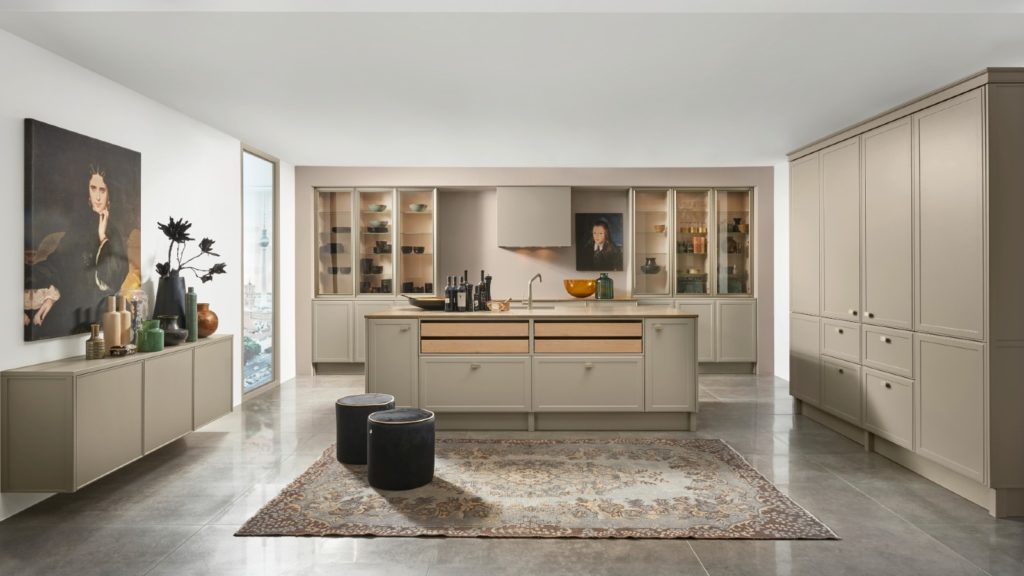
This new classic design by Nolte shows Torino Lack furniture in Lava soft matt lacquer, which is combined with Oak Pinot wooden drawers.
Chris Rushby points out: “There has been a shift towards more natural products and in particular those finishes and styles which contain an element of ‘real’ material.”
Managing director of Daval Simon Bodsworth adds: “Infinitely stylish, real wood kitchens continue to hit the mainstream with great affection and we re finding that solid oak has become a go-to option for creating a sense of calm and serenity in the kitchen.”
Even if the timber is painted, the latest kitchen doors offer a glimpse of the natural wood, as Simon Collyns of Symphony adds: “The nostalgia trend has created an increase in sales of painted doors, particularly the true Shaker and in-frame styles. These tend to be real painted timber with the wood grain texture visible for added character and charm.”
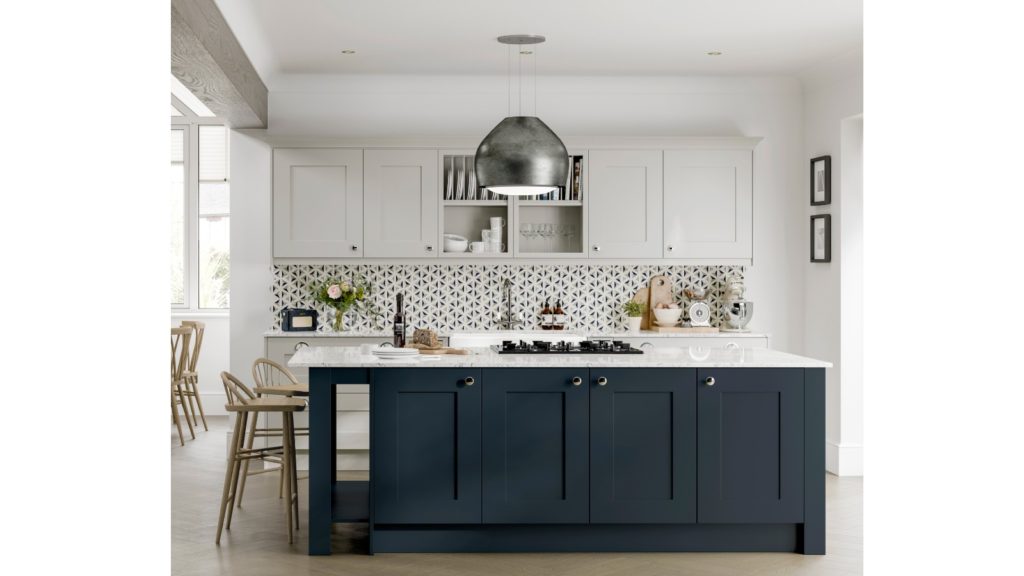
Part of the Koncept kitchen range, by Symphony, is Princeton. It is a one-piece, smooth Shaker design and comes in Indigo and Pearl Grey
And in line with authentic materials has come an injection of heritage colours, spanning cream, grey and even green. “Dark Green is picking up interest lately and we see this becoming a big trend this year and next”, says Simon Collyns.
However, materials such as real wood sees the look positioned for the higher-end of the price bracket.
So kitchen furniture manufacturers have worked to create a more price accessible, classical kitchen aesthetic.
Chris Rushby explains: “We have introduced a look and feel associated with natural finishes in some of our entry-level price group products. This allows for the same style statements to be made but with a much broader appeal.”
Open and broken plan
And the classical style kitchen or nostalgic designs are also eminently suited to the trend for broken plan and open plan schemes.
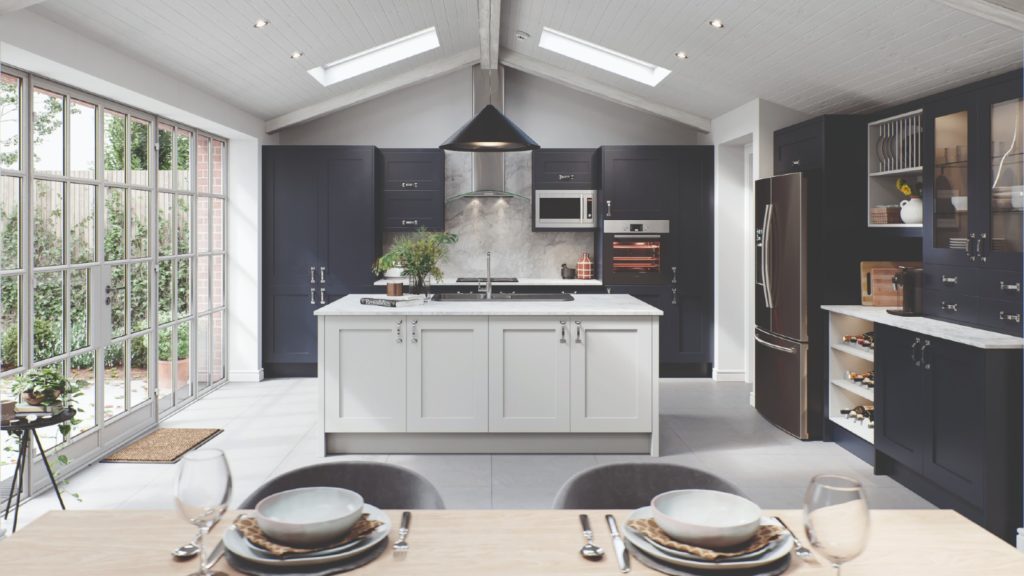
Reinvigorating the traditional Shaker, TKC offers the Oxford door with a redesigned and refined frame. It features a thin frame measuring 88mm
Simon Collyns comments: “It’s quite compatible with both open and broken-plan designs, as these types of kitchen layout usually have an island with feature units, open display ends, wine racks and so forth, which all enhance the nostalgic feel.”
However, Chris Rusby is even more emphatic when he states: “I think nostalgia is perfect for open and broken-plan designs!”
He concludes: “Part of why we have this trend, for me, has to do with the fact that the past and stye of kitchen comes with the notion of cosiness, of spending time with others.”

